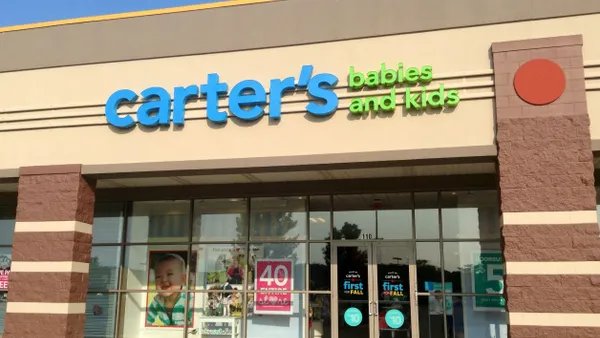Dive Brief:
-
July job cuts saw the lowest monthly total since November, as employers announced plans to cut payrolls by 28,307 positions, according to a monthly report emailed to Retail Dive from outplacement firm Challenger, Gray & Christmas.
-
But retailers are bucking that trend, leading all sectors this year with 63,989 announced cuts, 3,862 of them in July alone. Retail job cuts are 46.7% higher this year than in the year-ago period, which saw 43,618 retail employment cuts.
-
Retailers have also announced 245,616 of the 556,493 new jobs that have been added so far this year, according to Challenger’s report. The seven-month hiring total is 500% higher than the 92,802 new jobs announced in the year-ago period.
Dive Insight:
Because people with jobs (especially if they're earning decent wages, and therefore are able to match the rising costs of health care and rents) spend more, employment is key to retailers no matter who is hiring. As U.S. retail continues its correction of too many stores and not enough shopping, though, the bright employment situation these days isn’t being shared by retailers themselves.
With store closures topping 6,000 for the year, the number of announced job cuts in retail has passed 60,000, according to research from Challenger, Gray & Christmas. The year’s retail job losses have already surpassed all other years but one since 2009, and 2017 is barely half over. Most have come from the department store and apparel sectors, as well as niche retailers. Macy’s alone has let go of 10,000 people and J.C. Penney has laid off another 5,000, according to Challenger.
And the cuts keep coming. In recent days, several other retailers have announced cuts. Walmart this week confirmed that it’s slashing 'a few dozen' corporate jobs as it pivots to a stronger e-commerce play, Best Buy is trimming its Geek Squad workforce by roughly 400 and outsourcing employees who work in remote positions nationwide, Under Armour is shedding 2% of its workforce amidst a sales slump and Sears has laid off hundreds of workers as it shutters stores and downsizes it headquarters.
In many ways retailers are adding jobs thanks to e-commerce, paying workers for new jobs that previously were taken care of by shoppers themselves. That is, retailers are replacing work the consumer used to do with paid employees to do it for them. Fulfillment center workers, for example, locate the products we ordered and truck drivers take the items to our door.
"Here's what’s happening — we’re substituting paid labor for unpaid hours that households used to put into shopping," Michael Mandel, chief economic strategist at the Progressive Policy Institute, told Retail Dive recently. "It used to be you would get in your car and drive to the mall or the big box store, and you would wander around for a couple hours looking for stuff, and then you’d stand in line, and you would retrieve your car from the enormous parking lot, and you would drive home. And it would take, oh, three or four hours."
Still, retailers are already putting together their plans for seasonal hiring and it’s not clear that they’ll be staffing up as much as they have in years past, according to Challenger, Gray & Christmas CEO John Challenger.
“We typically see the most hiring announcements in September and October, as companies prepare for the holiday rush. It will be interesting to see whether there are such large gains again this year, or if the staffing that is currently occurring will keep those gains at bay,” Challenger said.













